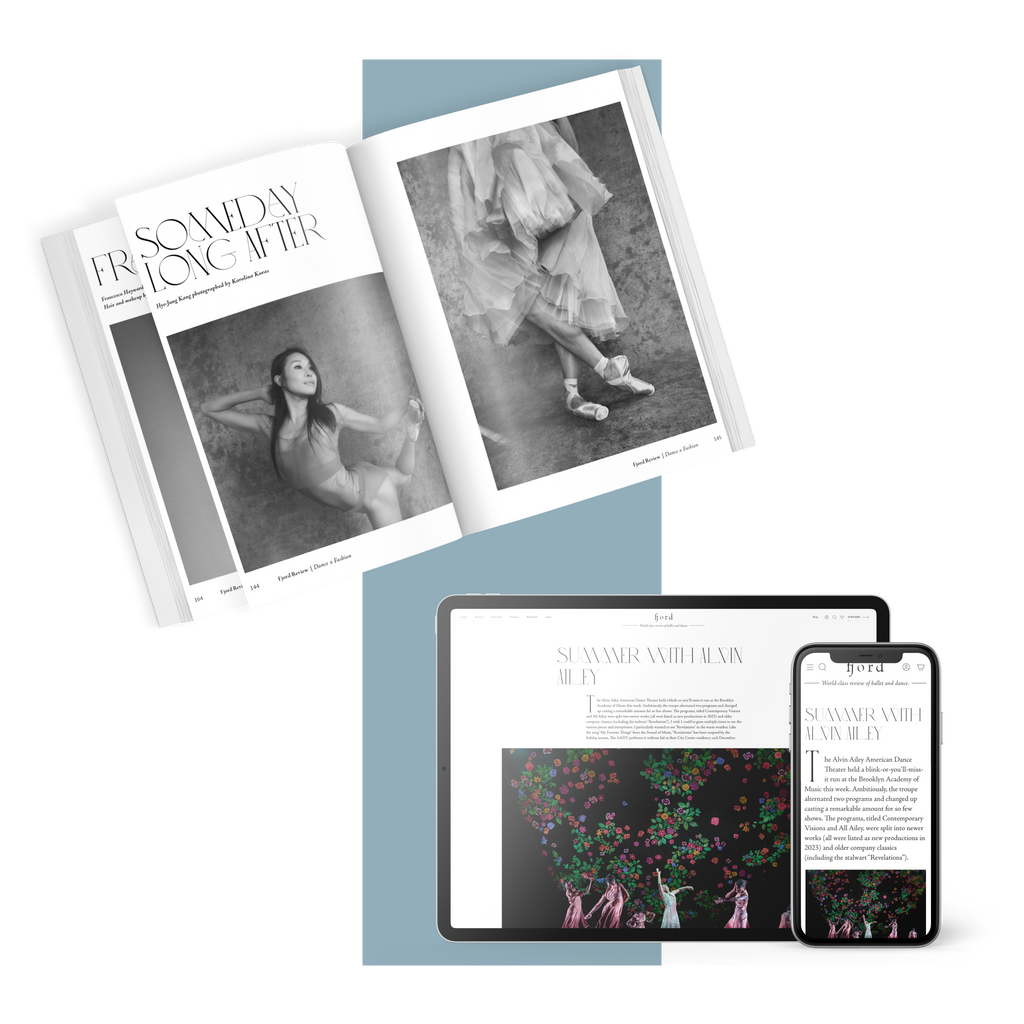Spellbound
Two performers crawl in on hands and knees wearing neon green, hooded coveralls—the lightweight papery kind made for working in a sterile environment—and clusters of balloons pinned to their backs.
Plus
World-class review of ballet and dance.
American Ballet Theatre’s “La Bayadère” has just turned 35 years old, standing as one of the most enduring of the nineteenth century classics in the company’s repertory. Such impressive longevity can be attributed to the uniqueness of the current staging, mounted for the company in 1980 by Russian prima ballerina Natalia Makarova, who danced the ballet, originally created by Marius Petipa, during her years with the Mariinsky Ballet of St. Petersburg (then called Kirov Ballet). Makarova acquired her knowledge of the interpretive nuances of the choreography as a manner of genuine artistic succession, learning the role of Nikiya, the ballet’s heroine, from Natalia Dudinskaya, former prima and the ballet mistress of the Kirov. Dudinskaya, in turn, was taught by Agrippina Vaganova, a pupil of Ekaterina Vazem, for whom the role of Nikiya was created and who danced it at the ballet’s premier in 1877. For Makarova, “La Bayadère” has become a life-long passion and vocation. Over the years, she has staged numerous productions of the ballet for companies around the globe.
Performance
Place
Words

Isabella Boylston in “La Bayadère.” Photograph by Gene Schiavone


“Uncommonly intelligent, substantial coverage.”
Your weekly source for world-class dance reviews, interviews, articles, and more.
Already a paid subscriber? Login
Two performers crawl in on hands and knees wearing neon green, hooded coveralls—the lightweight papery kind made for working in a sterile environment—and clusters of balloons pinned to their backs.
PlusWill Rawls makes boundaries visible by defying them. Known for the disciplinary and topical range of his projects, the choreographer, director, and performer approaches issues of representation in “[siccer],” a multi-part, multi-site work co-presented by L’Alliance New York’s Crossing the Line Festival. A live performance at Performance Space New York accompanies a multimedia installation at the Kitchen, a book published by Wendy’s Subway, and an album published by the artist. With a creative process reaching back to 2018, the work delves explicitly into pandemic-era energies and inertias with focused intimacy and a pervasive sense of instability.
PlusIt is always interesting when multiple theme steps emerge over the course of a mixed repertory evening, but it is uncanny on one featuring five different ballets, each with a different choreographer and composer, covering a twenty-year span (2005-2025).
PlusZvidance premiered its new work “Dandelion” mid-November at New York Live Arts. Founded by Zvi Gotheiner in 1989, Zvidance has been a steady presence in the New York contemporary dance scene, a reliable source of compositional integrity, and a magnet for wonderful dancers.
Plus
comments